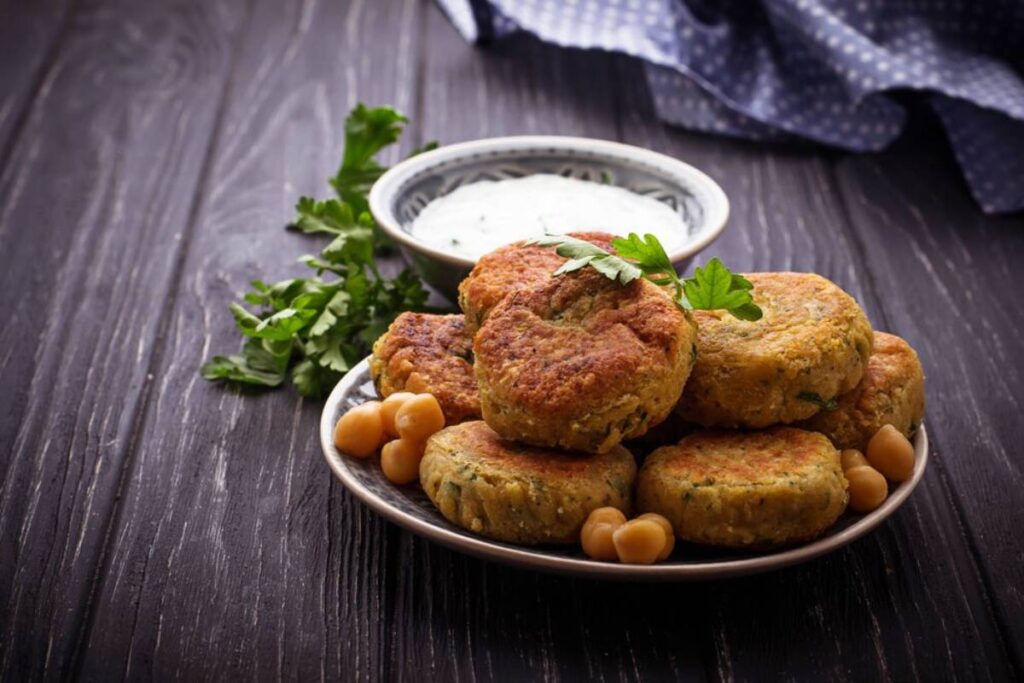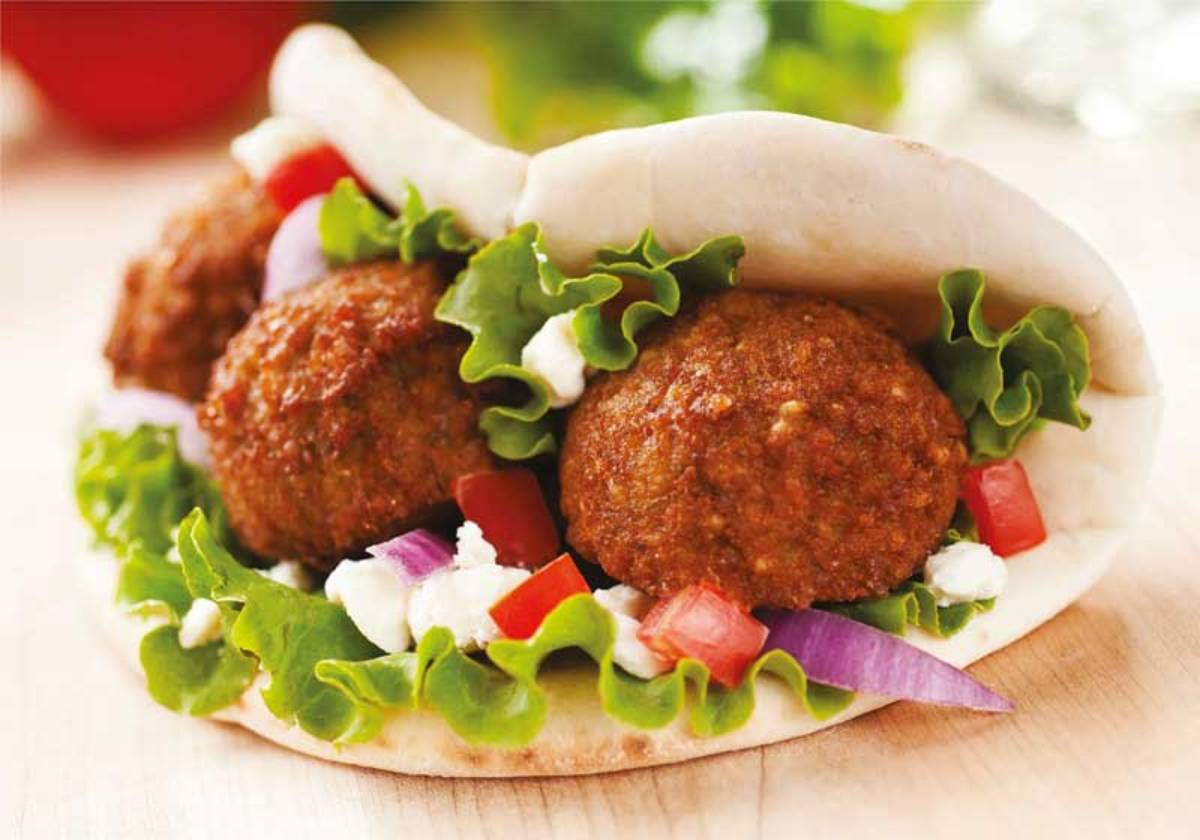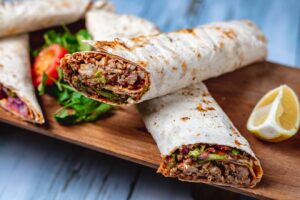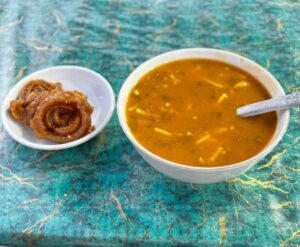The Food & Recipes Blog

Falafel Across the Middle East: What Makes It Unique?
When falafel comes to mind, it’s often because of Middle Eastern street food. This simple yet enriching dish has tasted buds of many around the globe by storm and has carved its place as an integral part of Middle Eastern, rn cuisine. But what sets Middle Eastern falafel apart, and why is it a beloved staple? Falafel: Popularity and globalisation, a fact that, along with its history, made me want to learn more about falafel. This article explores falafel’s rich history and cultural significance in the Middle East. We look at its diverse variations and what makes it unique among chickpea street foods.
Introduction
Falafel is a ball or patty fried in oil and made from dried ground chickpeas or fava beans. I had a popular Middle Eastern street food. It’s crispy outside and soft, flavourful inside, which makes it a good snack or part of a meal. Falafel has global appeal. However, its Middle Eastern portions and styles give a unique, flavorful taste to the region’s varied culture.
Part of falafel’s appeal is not only its flavour but also its adaptability. It’s often served in a pita, as part of a mezze platter, or just as it is with various sides. Falafel is simple, but it has a lot of meaning for many. It symbolises the hospitality and warmth of Middle Eastern culture.
Key Benefits / Why It Matters
The Cultural Significance of Falafel in the Middle East
Falafel isn’t merely a delicious street food in the Middle East.
It is a shared food legacy with no national borders, connecting people across the region. Falafel is not simply food in Egypt, Lebanon, Israel and Palestine. It is a cultural emblem that tugs at the heart of Middle Eastern cuisine.
Falafel worldwide — Many variations of falafel exist in countries that do not share borders. Falafel in Egypt — called “ta’amiya” — is almost always made with fava beans. However, chickpeas are the star in other parts of the Middle East. These variations are a testament to how diverse Middle Eastern cuisine can be. It also points to the flexibility of falafel as a dish.
Nutritional Value and Health Benefits
In addition to its cultural significance, falafel is prized for its health properties. It is a popular vegetarian and vegan plant-based protein source. The chickpeas and fava beans that make up the base for falafel pack a punch in protein, fibre, and essential vitamins and minerals. These nutrients form a well-balanced diet. They improve heart health, encourage digestion, prevent fat gain, and help manage weight.
Then there’s falafel’s method of preparation—deep-frying, which may cause concern regarding its healthiness. If you consume it in moderation and prepare it with quality ingredients, falafel can make a healthy and delicious addition to your diet. (Some modern falafel variations are baked rather than fried.) This makes them more nutritious but just as tasty.
Additional Expert Tips & Common Mistakes to Avoid
Perfecting the Falafel Recipe

Perfecting falafel takes care and knowledge of how the ingredients and methods work. Another frequent fail is using canned chickpeas, which often leads to a spongy mass. Instead, use dried chickpeas that have been soaked overnight. That will make it stiffer and taste better.
Adding fresh herbs and spices to the mixture is another excellent tip for making a fantastic falafel. Parsley, coriander, cumin, and garlic provide depth of flavour and contribute to the dish’s aromatic profile. Striking a blend of these flavours is crucial for the proper flavour and mouthfeel.
Avoiding Common Pitfalls
One of the biggest pitfalls with falafel-making is that the mixture falls apart once you fry it. It’s crucial to ensure the mixture is not too wet to prevent this. Drain the soaked chickpeas well. Then, add a binding agent like flour or baking powder. This helps the falafel keep its shape while cooking.
Additionally, maintaining the correct oil temperature is essential. If the oil is too hot, the falafel can burn on the outside while remaining undercooked inside. Conversely, if the oil is not hot enough, the falafel can absorb excess oil, resulting in a greasy texture. A consistent oil temperature of around 180°C (356°F) is ideal for achieving a crispy, golden-brown exterior.
Advanced Insights / Expert Recommendations
Exploring Falafel Variations Across the Middle East
Falafel’s adaptability has led to many variations across the Middle East, each offering a unique twist on the classic recipe. In Israel, falafel is often served in a pita with various pickles and tahini sauce, creating a flavourful and satisfying meal. In Lebanon, falafel is typically smaller and spicier, with the addition of ingredients like chilli peppers and garlic.
In Syria and Jordan, falafel often gets a kick from sumac. It can also come with a tangy yoghurt sauce, which adds a refreshing touch to the rich dish. Regional differences show the varied food scene in the Middle East and how falafel can adapt to different tastes and preferences.
The Role of Falafel in Modern Middle Eastern Cuisine

In recent years, falafel has experienced a resurgence in popularity in the Middle East and internationally. With more people choosing plant-based diets, falafel is now a popular choice. It offers a tasty and healthy alternative to meat dishes. Its versatility and ease of preparation make it an ideal choice for home cooks and professional chefs.
Moreover, the rise of street food culture has further cemented falafel’s status as a beloved culinary staple. Food stalls and markets in the Middle East and beyond showcase their falafel styles. The delicious aroma and taste draw in both locals and tourists.
Celebrating the Diverse Flavours of Middle Eastern Falafel
Falafel’s journey from a simple street food to a global culinary phenomenon is a testament to its enduring appeal and versatility. Its rich history and diverse variations make it a beloved part of Middle Eastern cuisine and more. Falafel is a dish that connects people. You can enjoy it in a busy market in Cairo or at a cool food stall in London. Its Middle Eastern flavours cross borders and unite us all.
Try different falafel recipes and variations to find your favourite. You can enjoy falafel in classic chickpea form or with a modern twist, with new spices and sauces. Embrace the flavours and traditions of the Middle East, and let falafel take you on a culinary journey like no other.
What are your favourite falafel experiences or recipes? Join the conversation! Share your thoughts as we celebrate the tasty and diverse falafel found across the Middle East.









